 September
26
September
26
Tags
Fed Keeps Moving the Goal Posts
 By David Nelson, CFA
By David Nelson, CFA
Investors understand markets are discounting mechanism that look to perceived future cash flows to price an asset today. It doesn’t matter what the asset is, stocks, bonds, real estate or even art. All are subject to the financial laws of nature. Art doesn’t generate income at least not until it is sold for a profit but that in itself is another form of cash flow.
Assets compete for your dollars just like everything else and the rallying cry for the last 12 years at least when it came to stocks was that there was no alternative. Suddenly from almost nowhere there is. As of Friday, a U.S. T-Bill can pay you 4% on your money for just 1 year.
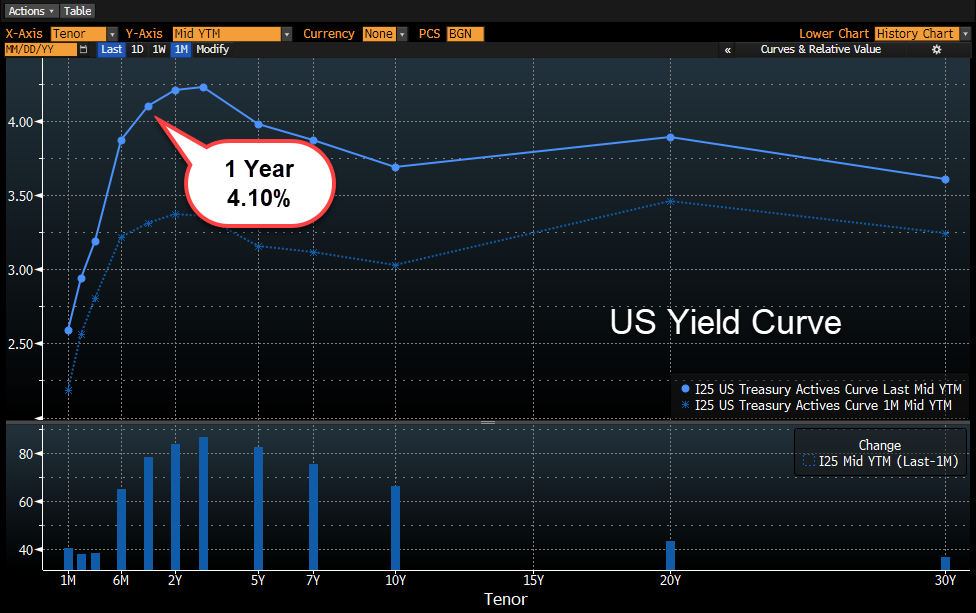
The above begs the question what investors need to see for stocks to start working again. We know it won’t be when the economy begins to regain traction. If history is any guide the launch will be well in advance of a turn in the economy.
Investing is a combination of science and art. The science is easy to understand. Most valuation models start with the risk-free rate and as we’re learning this year, each stair step higher in the terminal rate has meant a stair step lower in equity multiples and stock prices.
Digesting an endless stream of data and breaking news we layer in our subjective thesis to come to an informed investment decision.
Football
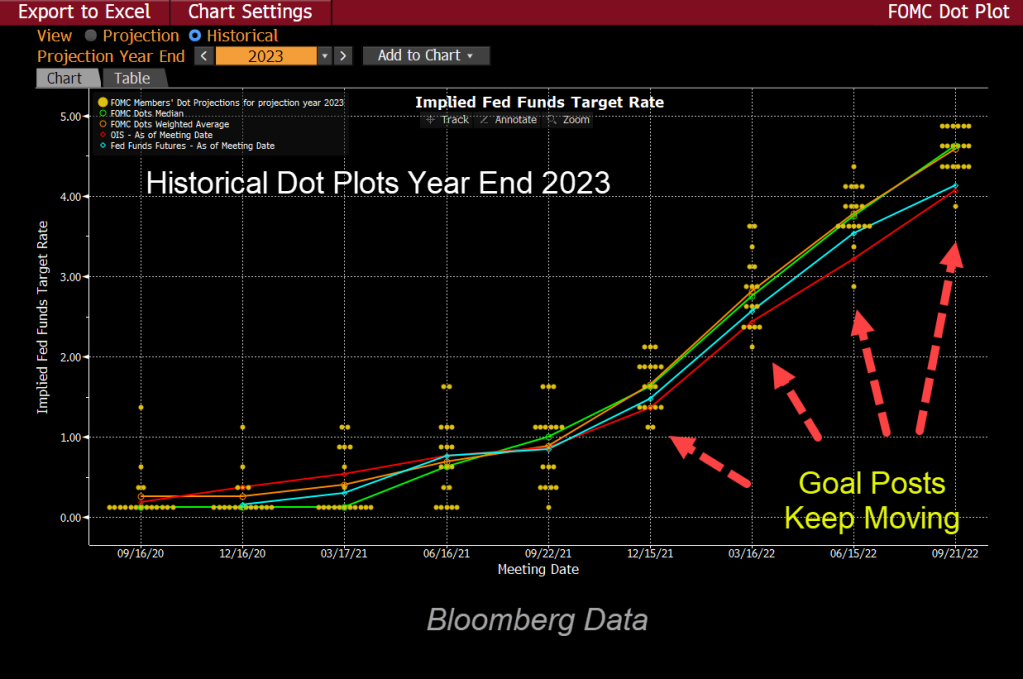
In football the players and coaches have an exact idea of how far they have to move the ball to score a touchdown. The end zone doesn’t move.
Stock investors don’t have it that easy. For most of the year the Fed has moved the goal posts making them a moving target.
Since the start of the year both the dot plots and fed fund futures have for the most part moved higher. In December of 2021 investors had prepared themselves for a fed funds terminal rate of just over 3% that wouldn’t hit until 2024.
Fed Fund Futures confirmed that slow assent pricing in less than one percent by February 2023.
By March, the picture proved a bit worse. The Dots had moved north to higher than 3.5% by the middle of next year.
The June Lows
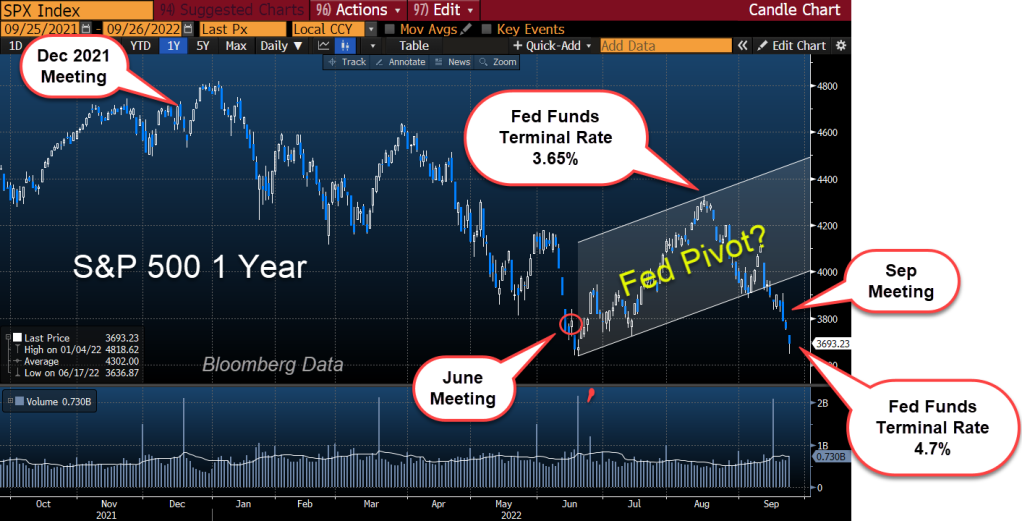
At the June meeting with equity prices hitting the lows of the year Fed officials indicated the terminal rate would hit 4.6% at some point next year. Shortly after that equity markets started to recover pricing in the infamous Fed Pivot or a perception the Fed would be forced to adjust course in the face of a slowing economy.
By Jackson Hole Fed Fund Futures were now pointing to just 3.7% next year well below what was indicated by the Fed Dot Plots just two months earlier. Powell’s opening remarks attempted to set the record straight. The fed funds futures market didn’t buy it and even a few weeks later the perceived terminal rate had only moved up slightly.
All that changed last week when the Fed raised rates 75 basis points for the third time this year. The commentary in the press conference that followed immediately pushed fed funds futures higher and today stands more than 100 basis points above where we were after the Jackson Hole retreat.
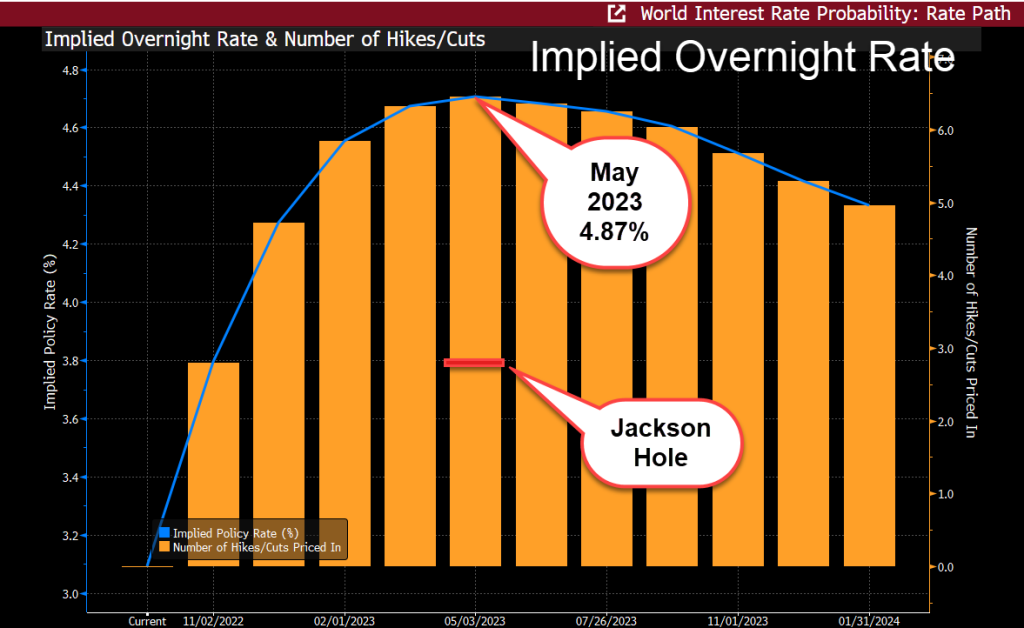
The good news is that we’ve been here before and today the peak of the cycle next year is very close to what we thought it would be back in June.
The bad news is the risk-free rate is only half the battle. We’re weeks away from the next earnings season as we close out the quarter at the end of this week.
Just last week Ford (F) offered a grim picture of the current earning’s backdrop.
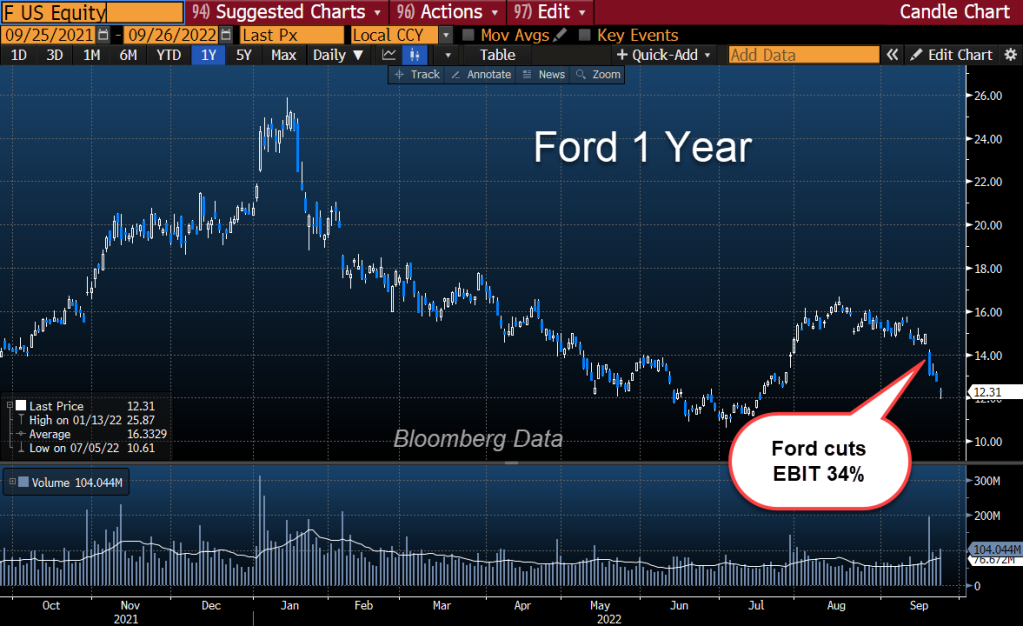
Ford cut its EBIT (Earnings Before Interest and Taxes) by 34% in part because they couldn’t get parts needed to finish cars. The reasons why don’t matter. If you can’t finish cars and in turn can’t deliver them, you don’t need as many employees. How long will it be before Ford announces another round of layoffs?
In the last few weeks, Peloton, Snapchat, Alphabet, Meta, Wayfair, Microsoft, Bed Bath and Beyond 20% of its workforce. I could go on for another 5 minutes with a list of companies that have announced layoffs or are freezing hiring.
I’ll repeat what I said in my post last week. Managing monetary policy is like steering a battleship. You have to make the turn well in advance of the pivot point.
Professor Jeremy Siegel – Wharton School

Professor of Finance at the Wharton School Jeremy Siegel went on a rampage Friday seemingly incensed with the press conference that followed the Fed’s Decision just days earlier. “Calling it poor monetary policy is an understatement” he said in a conversation with CNBC anchor Scott Wapner.
Professor Siegel believes the Fed is embarking on another policy mistake the first in keeping rates near zero in the face of obvious inflation and the second today oversteering monetary policy. He points out a year ago commodity prices were screaming higher, and they continued to keep rates near zero.
He goes on to say today we have the opposite. He felt reporters in the press pool didn’t ask the right questions.
Over the weekend Fortune magazine ran a story with a comment from non-other than Elon Musk regarding Professor Siegel’s remarks calling them ‘obviously correct.’